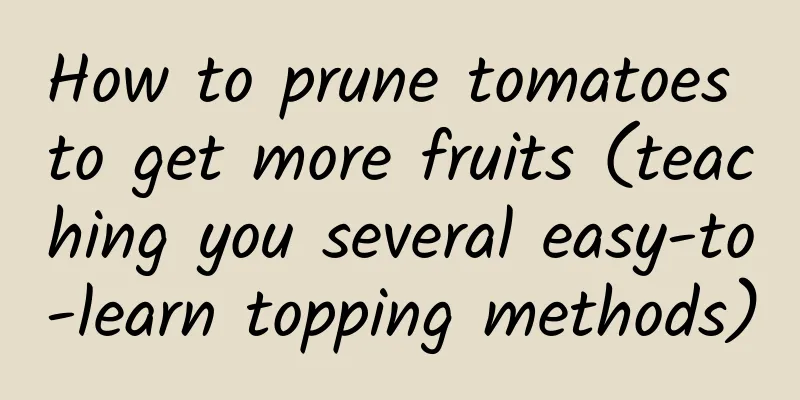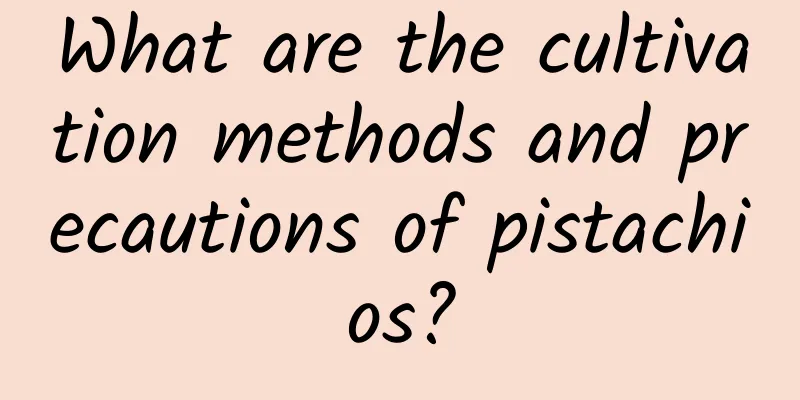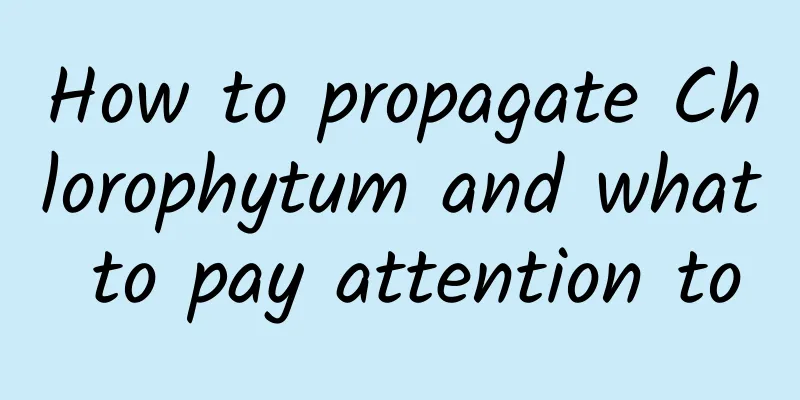How to prune tomatoes to get more fruits (teaching you several easy-to-learn topping methods)

|
I have quite some practical experience in tomato pruning and home planting. Pruning is generally divided into fork buds, top buds, flower buds, etc. I hope it can help everyone so that the tomatoes you grow can bear more fruits. The key is to make it easier to operate. When to prune tomatoesThe best time to prune tomato plants is after flowering, when there are usually 4 to 5 fruit branches . When the tomato plants begin to bloom, the sooner you start pruning your tomato plants, the better for their growth. How to top and prune tomatoes to get more fruit①Forked budsTomatoes germinate relatively quickly and grow quickly. When they grow to 20 centimeters or about one foot long, they will start to fork. At this time, the tomato has more than ten leaves and is slowly entering its peak growth season. When the forks grow to four or five centimeters, they need to be pinched off. Pinch them off with your hands near the main stem. Be careful not to pinch too violently and tear the skin of the main stem. Crossing out is something that needs to be done throughout the entire growth cycle of tomatoes. Generally, only the main stem is left, and no side branches are left. This is called the "1" shape, which is suitable for common large tomatoes. There is another type. After the tomato is forked, two strong side branches are left and all other branches are pinched off. It is a "Y" shaped plant, suitable for waterfall tomatoes and cherry tomatoes. The purpose of forking branches : Forking will consume the nutrients of tomatoes and weaken the growth of the main branches. The plant will also become weak due to excessive branches, and its growth will slow down in the later stage. Note when crossing branches : Crossing must be done on a sunny day, without rain or dew, to avoid infection with bacteria. ② Remove the first tidbitYou may have heard of "door pepper" and "door eggplant". In fact, the first bunch of flowers of tomatoes cannot be kept. The reason is the same as that of peppers and eggplants. The reason is : (1) The first bunch of tomato flowers are prone to deformity and poor quality , especially when the natural growth temperature is relatively low. The flower development time is too long, which will also aggravate this problem. (2) Keep the first bunch of flowers, just like eggplant and pepper, when the seedlings are small, they will produce offspring, which will consume nutrients. But for tomatoes, this will cause them to age prematurely, resulting in insufficient stamina. ③ ToppingWhen tomatoes grow to about 60 cm, or when they have 5-7 buds, remove the top buds. The purpose of topping is mainly the following two aspects: (1) After the top bud is removed, the plant will no longer have apical dominance and will not grow too tall . When it grows to a suitable height, pinch off the top bud (remove the bud above the red line) (2) The nutrients will be concentrated on the remaining main branches, flower buds, and fruits. The flower buds are less likely to fall off, and the fruits are easier to grow, which speeds up the maturation of tomatoes. ④Pick yellow leaves, old leaves, and diseased leavesGenerally, as tomatoes grow, the leaves at the bottom will gradually turn yellow physiologically. If you don't pick these yellow leaves, they are prone to germs and insects, and they don't photosynthesize, so they are useless and can be picked. However, do not pick too many at a time, one or two leaves will be enough . When more than two-thirds of the leaves turn yellow, you can pick them. Do not pick the leaves that are slightly yellow. Tomatoes have relatively few diseases and insect pests, generally aphids and leaf mold. Aphids can be sprayed with imidacloprid, and leaf mold can be treated by removing the diseased leaves and spraying fungicides. But overall, there are few diseases and insect pests in home-grown tomatoes. Tomato pruning precautions1. Tomatoes cannot be short of water for a long time. The leaves are thin, and if the lack of water is severe, the bottom leaves will turn yellow quickly. 2. During the tomato growth period, if there is too much rain, provide shelter from the rain if possible, otherwise the tomatoes will easily crack. 3. Tomatoes must be fertilized frequently with thin amounts of fertilizer every week. You can use bean dregs or egg shells as base fertilizer. Use rice water to water them every week. You can spray phosphorus, potassium and boron fertilizers once or twice a month to improve the fruit set rate, quality and sweetness. 4. After the tomatoes turn white, you can remove half of the leaves on the top and then expose them to more sunlight so that the tomatoes will turn red faster. 5. Tomatoes cannot be planted repeatedly, as this will increase the number of pests and diseases and reduce the yield. 6. Balcony planting requires self-pollination. The stamens are on the pistil. The terrace and ground planting are sealed and do not require artificial pollination. |
<<: When is the best time to fertilize roses in a year?
>>: How to water succulents correctly (detailed steps and tips for watering succulents)
Recommend
What to do if the hosta roots rot
Causes of Root Rot in Hosta In order to solve the...
How often should you water your mulberry tree?
How often should you water your mulberry tree? Wh...
Which species of Podocarpus is the most expensive
1. What kind of species The most expensive specie...
Cultivation methods and precautions of Malus truncatum
1. Breeding methods 1. Flower soil: The requireme...
Is it profitable to plant Scutellaria baicalensis? What are the profits and benefits of planting?
Is it profitable to grow Scutellaria baicalensis?...
How many days does it take for Chinese cabbage to sprout from seeds?
Chinese cabbage germination time Generally speaki...
Can I plant a peach tree in front of my gate?
Can I plant a peach tree in front of my front doo...
Planting and management of blueberry seedlings
Blueberry is an extremely popular small fruit tha...
How to breed the smilax china
How to breed the smilax china soil The sudden smi...
Can dahlias be grown in pots?
Can dahlias be grown in pots? Dahlias can be pott...
Top 10 most difficult succulent plants to grow, which one is the most difficult to grow
1. Mountain Rose The dormant period of mountain r...
The difference between Babao Sedum and Sedum Panax notoginseng
1. Difference of blades The leaves of Sedum multi...
How to plant chrysanthemum
1. Soil When planting chrysanthemums, you must fi...
What are the cultivation methods and precautions of Croton rotundus
Growth habit of Croton Codiaeum prefers a hot, hu...
Cultivation methods and precautions of calyx spur flower
The calyx spurredum is an ornamental plant that i...









